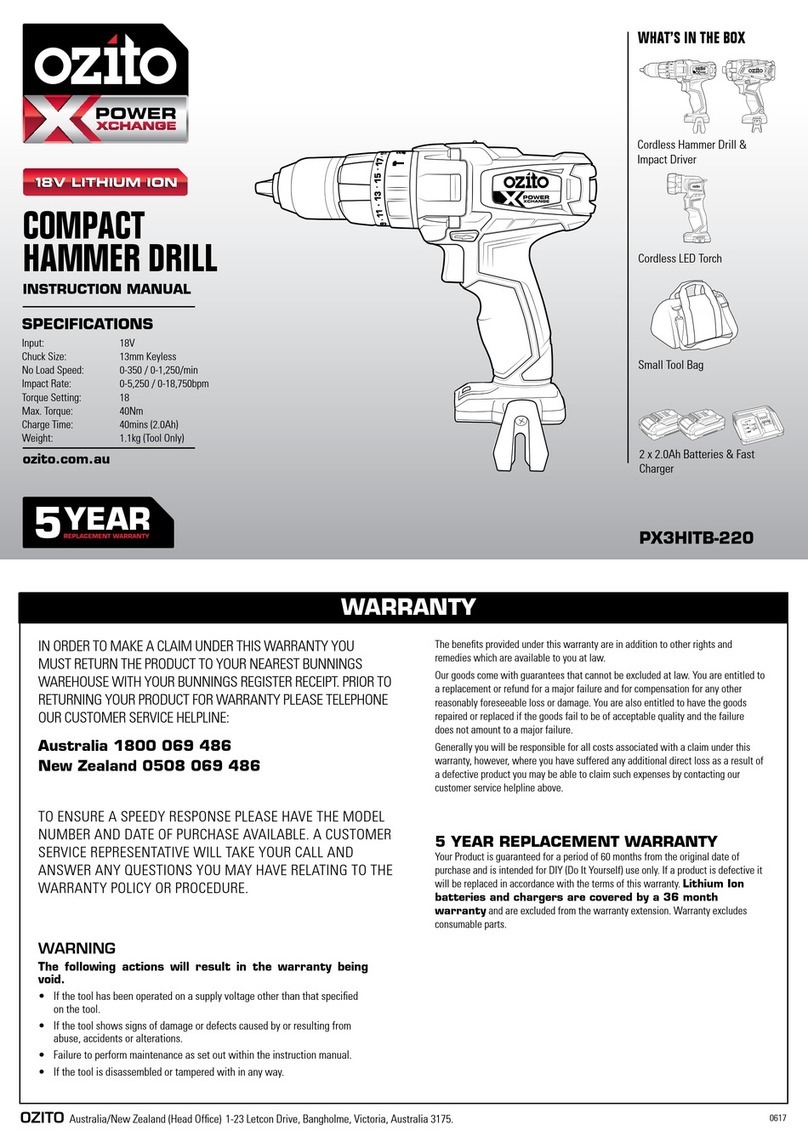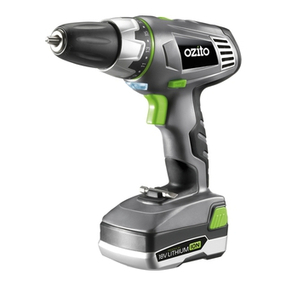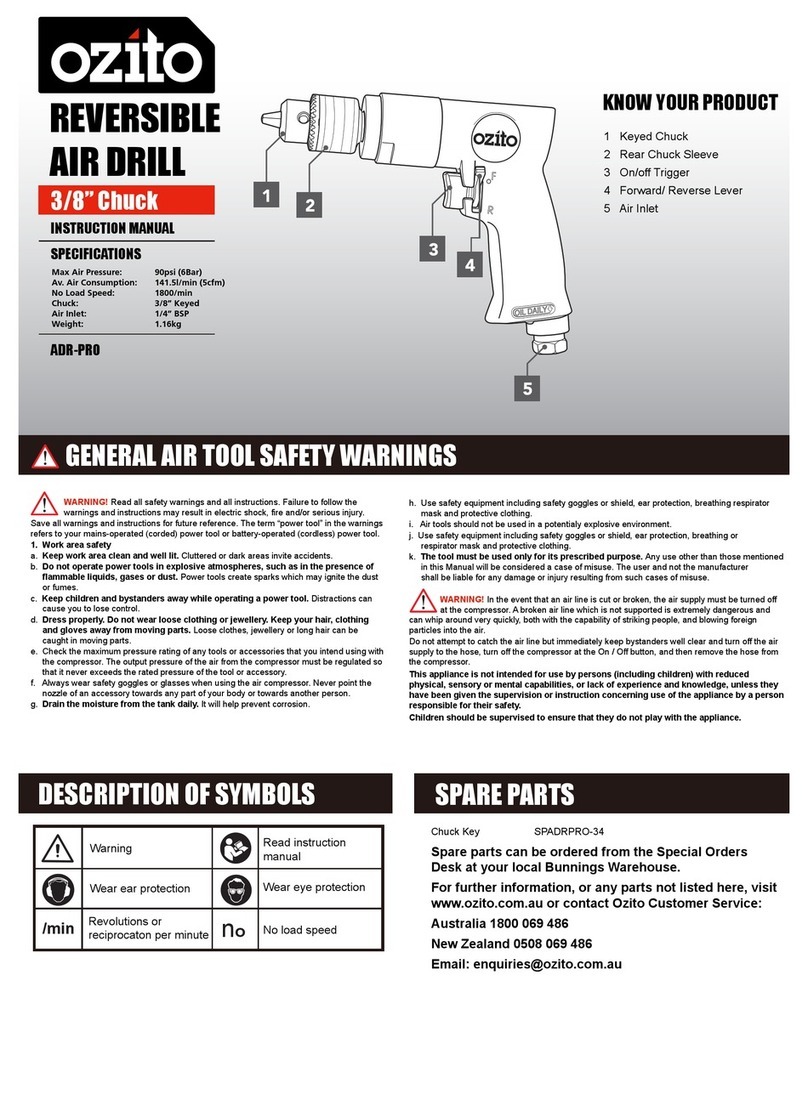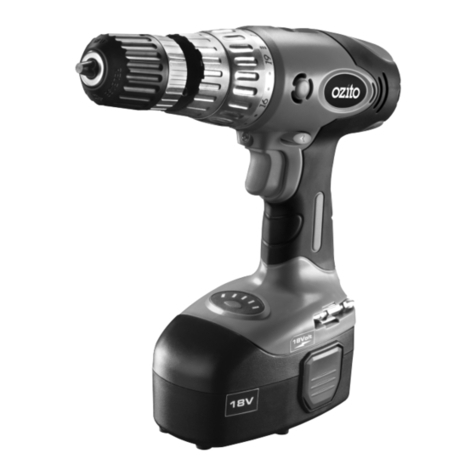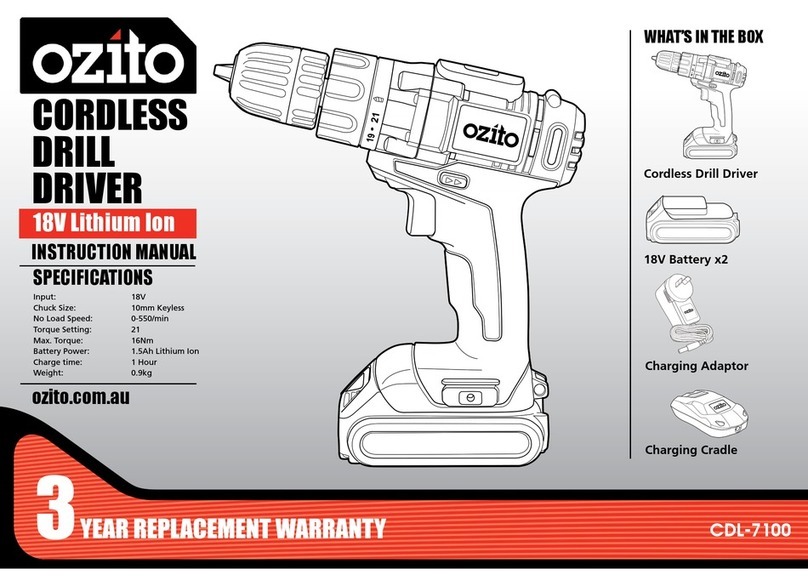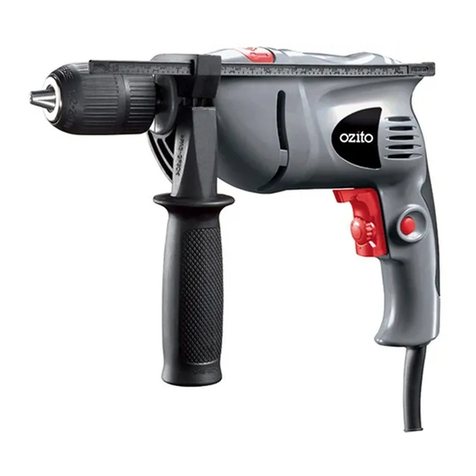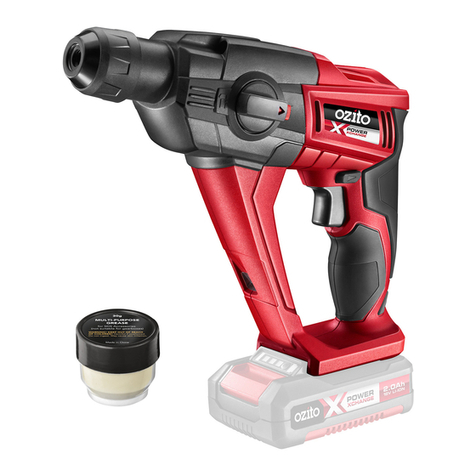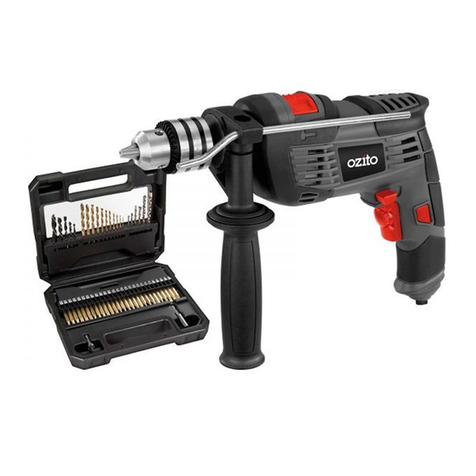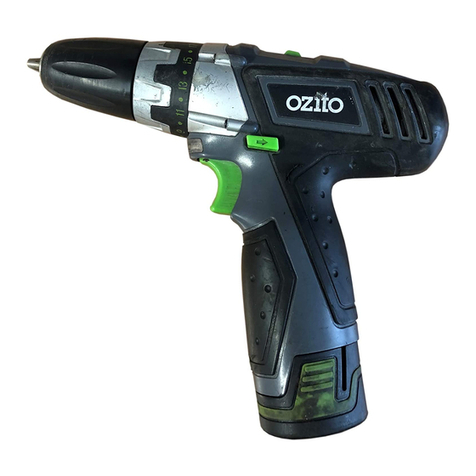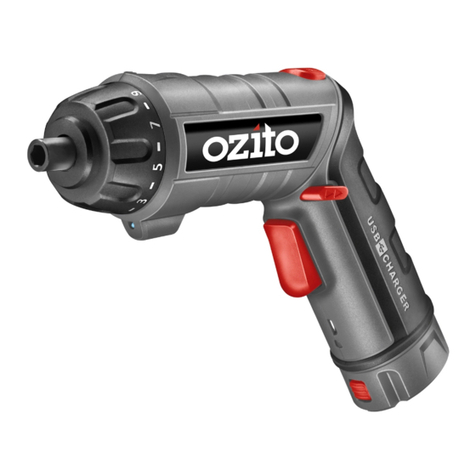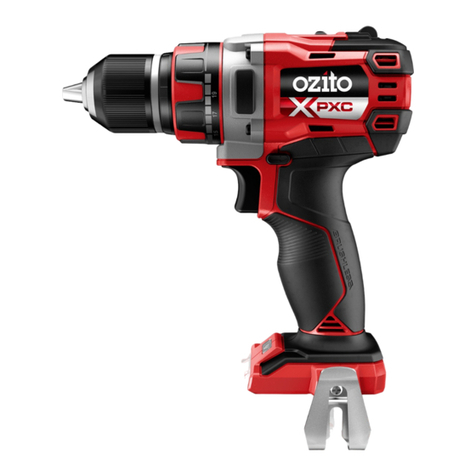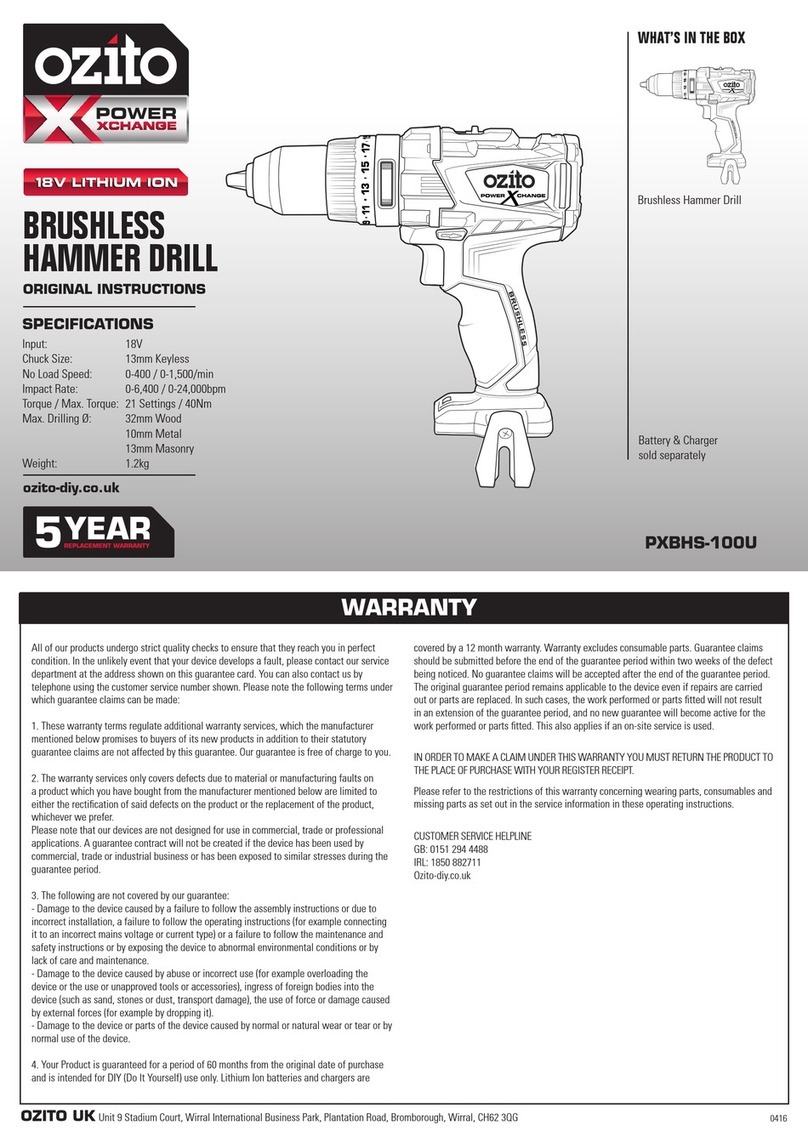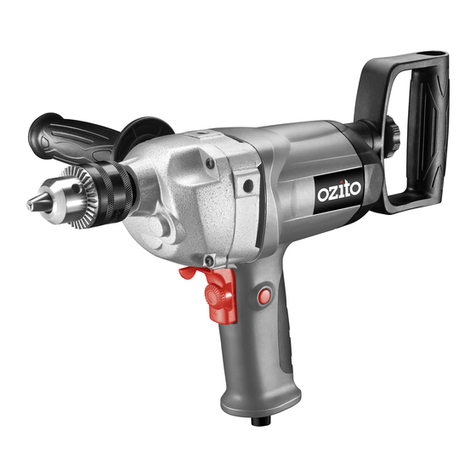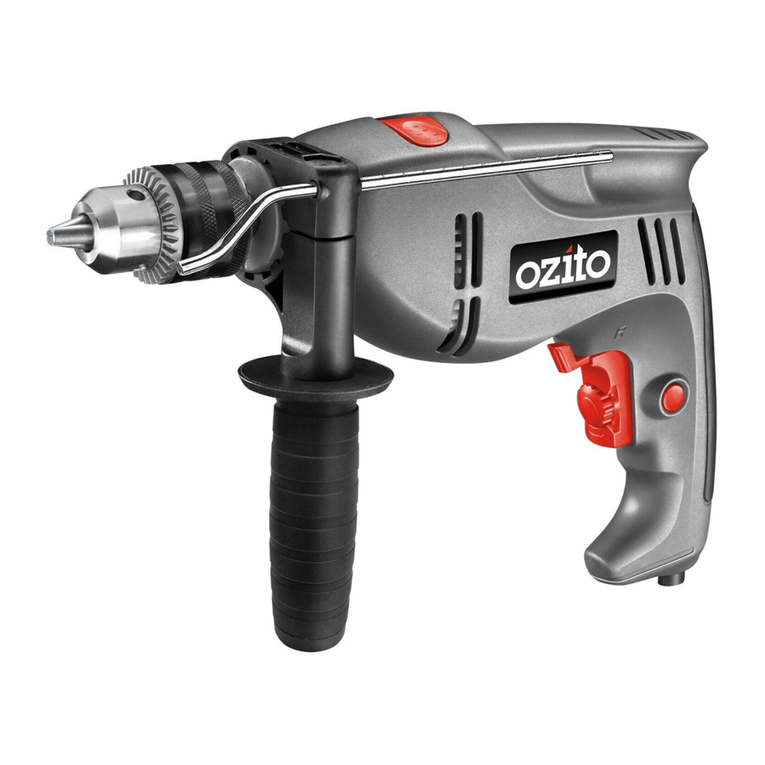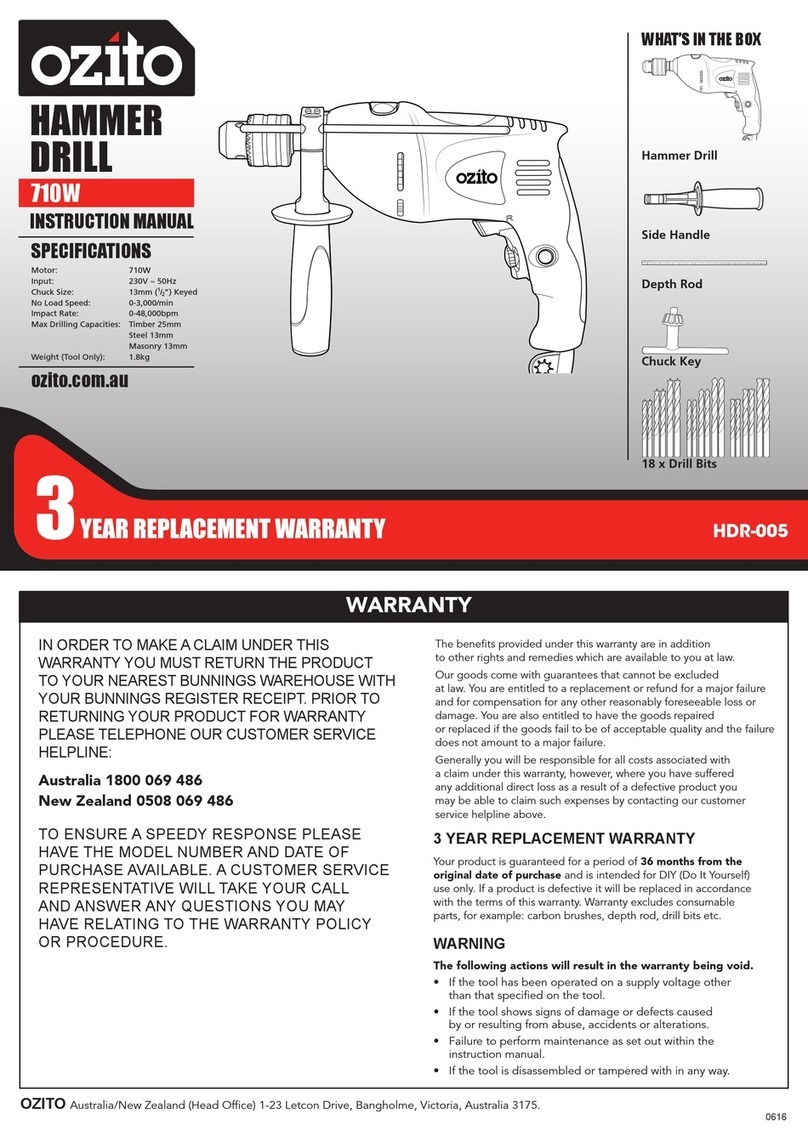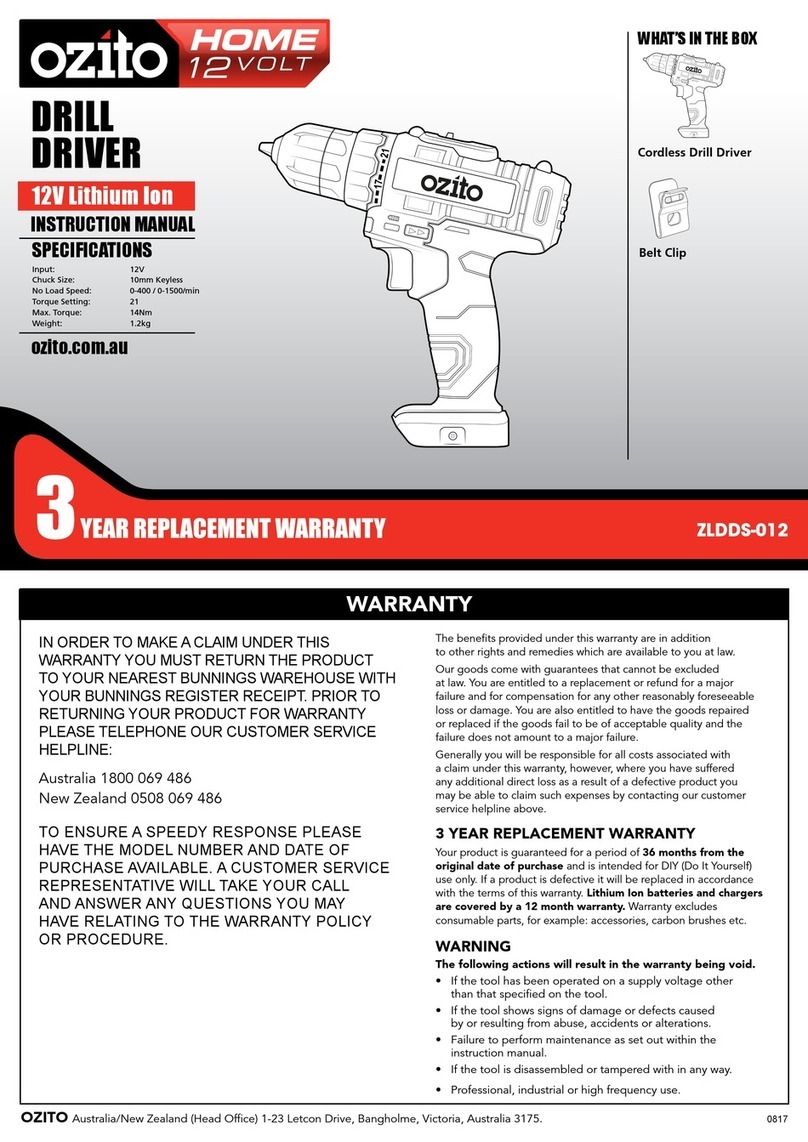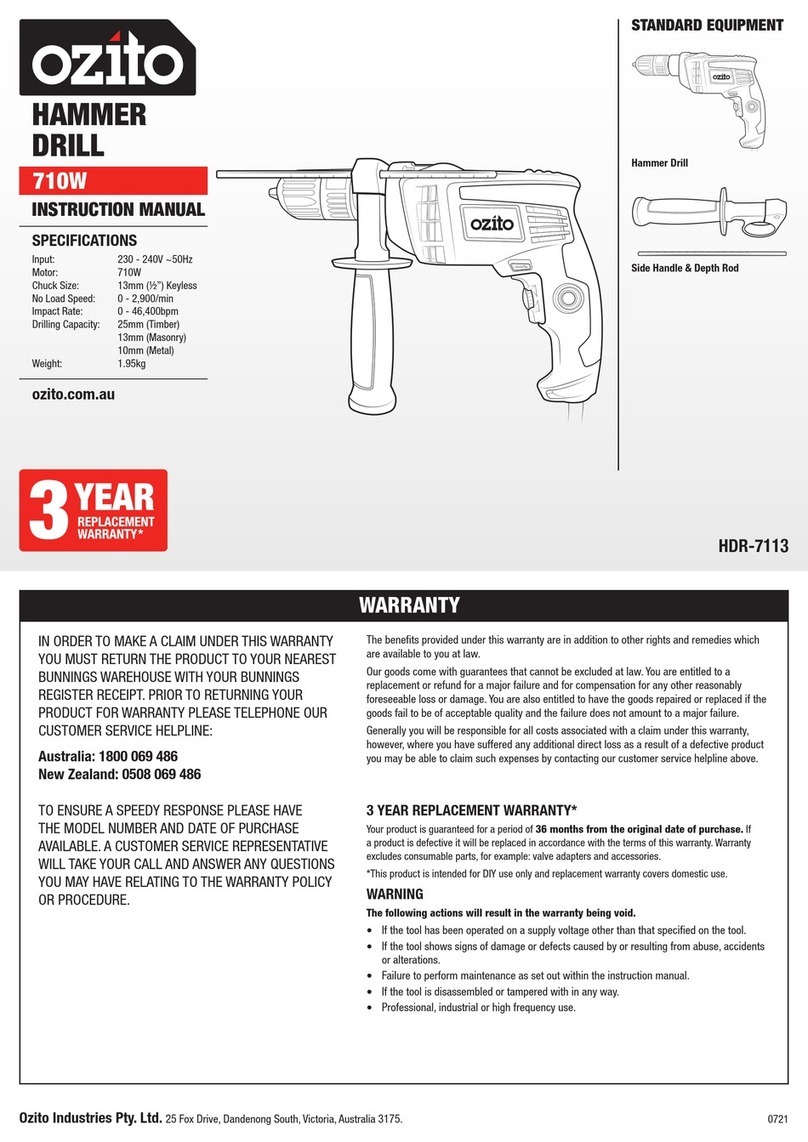5
e) When operating a power tool outdoors, use an extension cord suitable for
outdoor use.
Use of a cor suitable for out oor use re uces the risk of
electric shock.
3) Personal safety
a) Stay alert, watch what you are doing and use common sense when
operating a power tool. Do not use a power tool while you are tired or
under the influence of drugs, alcohol or medication.
A moment of
inattention while operating power tools may result in serious personal injury.
b) Use personal protective equipment. Always wear eye protection.
Protective equipment such as ust mask, non-ski safety shoes, har hat, or
hearing protection use for appropriate con itions will re uce personal injuries.
c) Prevent unintentional starting. Ensure the switch is in the off-position
before connecting to power source and/or battery pack, picking up or
carrying the tool. Carrying power tools with your finger on the switch or
energising power tools that have the switch on invites acci ents.
d) Remove any adjusting key or wrench before turning the power tool on.
A
wrench or a key left attache to a rotating part of the power tool may result in
personal injury.
e) Do not overreach. Keep proper footing and balance at all times.
This
enables better control of the power tool in unexpecte situations.
f) Dress properly. Do not wear loose clothing or jewellery. Keep your hair,
clothing and gloves away from moving parts.
Loose clothes, jewellery or
long hair can be caught in moving parts.
g) If devices are provided for the connection of dust extraction and
collection facilities, ensure these are connected and properly used.
Use of
these evices can re uce ust-relate hazar s.
4) Power tool use and care
a) Do not force the power tool. Use the correct power tool for your application.
The correct power tool will o the job better an safer at the rate for which it
was esigne .
b) Do not use the power tool if the switch does not turn it on and off.
Any
power tool that cannot be controlle with the switch is angerous an must
be repaire .
c) Disconnect the plug from the power source and/or the battery pack from
the power tool before making any adjustments, changing accessories, or
storing power tools.
Such preventive safety measures re uce the risk of
starting the power tool acci entally.
d) Store idle power tools out of the reach of children and do not allow
persons unfamiliar with the power tool or these instructions to operate
the power tool.
Power tools are angerous in the han s of untraine users.
e) Maintain power tools. Check for misalignment or binding of moving parts,
breakage of parts and any other condition that may affect the power
tools operation. If damaged, have the power tool repaired before use.
Many acci ents are cause by poorly maintaine power tools.
General Power Tool Safety Warnings - Personal Safety
!
